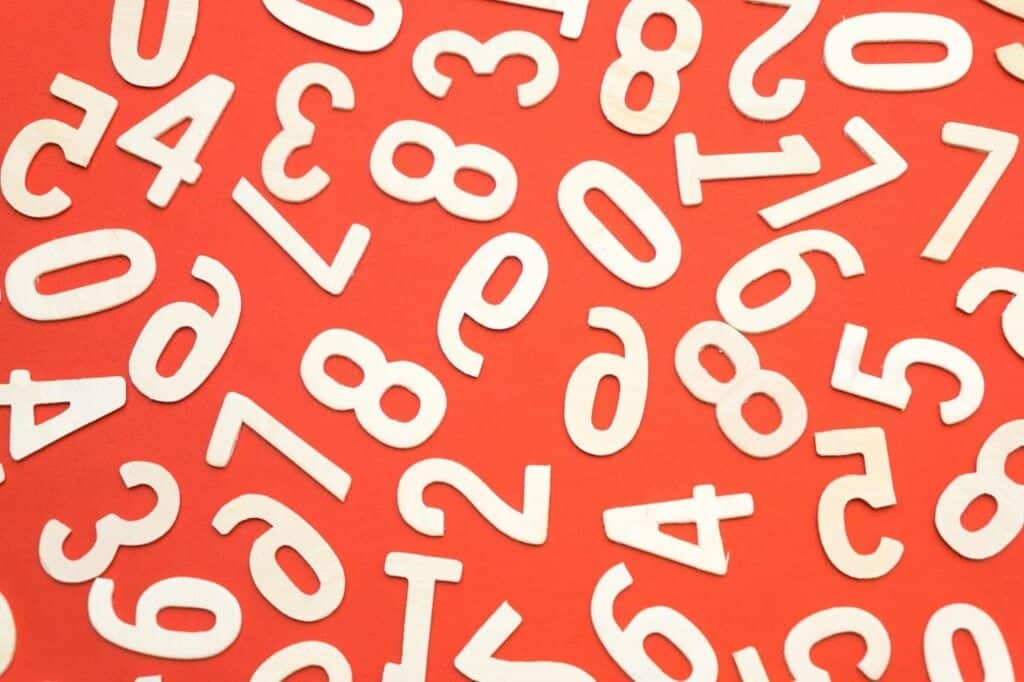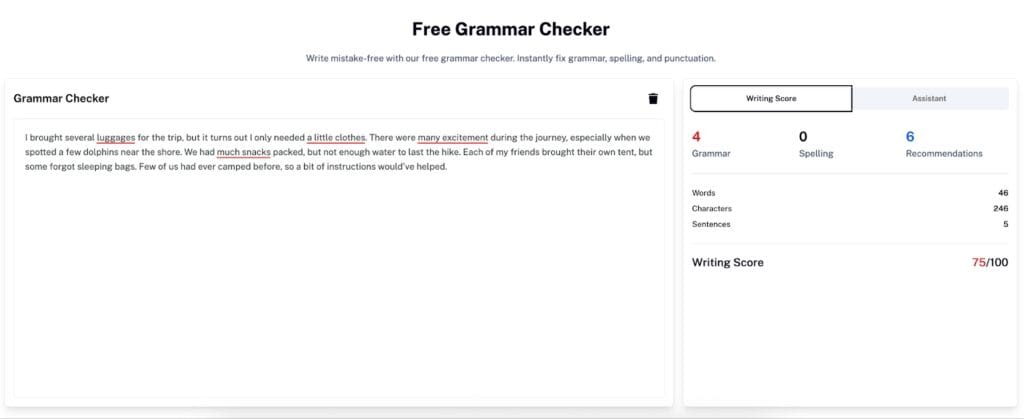You’re in the middle of a presentation explaining the number of sources you’ve used in a study.
Suddenly, you second-guess yourself. Is it only “a few” sources? Or maybe “several” sources?
Well, does it really matter anyway? The short answer is yes.
These words are known as quantifiers, and they carry weight in providing context.
You’re either making it clear that you only used a very small number of sources, or choosing a more general word to keep it open-ended.
The wrong choice of quantifier can confuse your message or even sound unnatural.
This guide is here to help you avoid that uncertainty.
Let’s go over what quantifiers are, including their different types and how to properly use them.
We’ve also included real examples and quick practice sections to sharpen your understanding from the get-go.
Key Takeaways
- Quantifiers in English express quantity without giving an exact number. They convey how much or how many of something exists in a sentence.
- There are different types of quantifiers, which include definite (all, each), indefinite (some, few), universal (every), or negative (none, neither), and they vary depending on whether the noun is countable or uncountable.
- Quantifiers are a specific type of determiner (words placed in front of nouns to clarify what the noun refers to). While all quantifiers are determiners, not all determiners are quantifiers.
What Are Quantifiers and Why Do They Matter
Quantifiers express how much or how many something is. The catch, however, is that you’re not giving a specific number.
They’re usually a type of determiner, which means that they come before nouns.
- Example: She has some experience in design.
But quantifiers can also stand alone without a noun when it’s clear what’s being referred to.


Never Worry About AI Detecting Your Texts Again. Undetectable AI Can Help You:
- Make your AI assisted writing appear human-like.
- Bypass all major AI detection tools with just one click.
- Use AI safely and confidently in school and work.
- Example: How many cookies did you eat? “Just a couple.”
Quantifiers can be used to describe large amounts and small ones, whether something’s enough, and even vague quantities.
They’re important because the one you choose adds clarity and credibility to your statement, especially when making a claim or presenting data and findings.

Quantifiers vs Numbers vs Determiners
Quantifiers, numbers, and determiners easily overlap. That said, each still serves a unique grammatical purpose.
Here’s how each of them differs:
- Quantifiers: Express an amount or quantity without giving an exact number.
Example: Dad brought enough food for everyone.
- Numbers: Use cardinal numbers (one, two, three, and so on) to give an exact amount.
Example: I bought four books today.
- Determiners: A broader grammatical category which includes both quantifiers and numbers, but also articles (a, an, the), demonstratives (this, those), and possessives (my, his, her). They modify nouns by providing context, such as ownership, specificity, or quantity.
Example: He already read those books yesterday.
So, are they all related?
Yes. Quantifiers and numbers are both types of determiners, but not all determiners are quantifiers or numbers.
Definition of a Quantifier
A quantifier is mainly used to express a general sense of quantity.
They’re useful when you want to describe something without getting into the specifics. It’s a more flexible way to show an amount.
Grammatical Role of Quantifiers
In grammar, quantifiers typically appear before the noun. They modify nouns to indicate how much or how many.
But, they can also appear before an adjective.
Quantifiers can come before one and modify the entire noun phrase, including the adjective itself.
- Example: Several excited guests
“Several” = quantifier
“excited” = adjective
“guests” = countable noun
The main goal of quantifiers is to clarify context. You can set expectations or limits for something.
For instance, rather than saying “Time is all we need,” you can specify this to “A little time is all we need.”
With this, it’s more understandable how much more time is expected.
Types of Nouns They Can Be Used With
While we’ve already made clear that quantifiers express quantity, remember that they don’t work with every type of noun.
Quantifiers behave differently depending on whether the noun is countable or uncountable. Here’s how they compare:
- Countable nouns: These are nouns that you could count individually. They usually have a singular and plural form.
Example: countable noun = paper
- With a quantifier = three papers
- In a sentence = We have three papers to submit this week.
- Uncountable nouns: As in the name, these are nouns you can’t count individually. They usually don’t have a plural form, and are often used to measure something in bulk or mass.
Example: uncountable noun = sugar
- With a quantifier = much sugar
- In a sentence = There isn’t much sugar left in the jar.
Note! Some nouns can be both countable and uncountable, depending on the context. However, you can still use quantifiers for them (e.g., five cakes, some cake).

If you’re unsure whether a quantifier matches the right noun type in your writing, Undetectable AI’s Ask AI tool can be your handy guide as you learn at your own pace.
It’s a quick, reliable way to double-check your sentences while giving you time to explore the nuances of English grammar.
Types of Quantifiers
Notice how “all students” is so dissimilar to only “some students”? Different types of quantifiers help define your statements depending on the context.
Definite Quantifiers: all, both, each, every
Even though quantifiers are meant to express general amounts, some of them are more precise. Definite quantifiers usually refer to an individual or a complete group.
Examples:
- All students passed the test (refers to the whole group).
- Both books were interesting (exactly two).
- Each employee received the memo (a whole group, but focusing on individuals).
- Every parent has to attend the conference (similar to each, but more general).
Indefinite Quantifiers: some, many, few, several, much
If you want to mention an amount of something but aren’t sure how much there is, you can use indefinite quantifiers to express an unspecified quantity.
Examples:
- Some guests arrived early.
- Many attendees enjoyed the show.
- Only a few employees took the survey.
- Several issues need fixing.
- Much of the work is already done.
Universal Quantifiers: all, every
You use universal quantifiers if you want to include everyone (or everything).
Examples:
- All dogs go to heaven.
- Every item has to be scanned.
Negative Quantifiers: none, neither, few
Negative quantifiers are used to indicate that nothing or a small amount is included. These are typically used to express limitations.
- None of the stores were open.
- Neither option works for me.
- We need a few coins for the machine to turn on.
Quantifiers for Countable vs Uncountable Nouns
Some quantifiers only work with countable nouns, others with uncountable nouns, and a few can be used with both (depending on the context).
- Quantifiers for countable nouns: many, few, several, each
- Quantifiers for uncountable nouns: much, little, a bit of, a great deal of
- Quantifiers for both: some, a lot of, plenty of, enough
How to Use Quantifiers in Sentences
The right quantifier helps your sentence feel more natural and context-appropriate.
Keep these rules in mind to use them effectively:
- Always place the quantifier before the noun or adjective (if any).
Example: She brought several beautiful necklaces.
- Make sure the quantifier matches the noun type (countable vs uncountable).
Example: ❌There are much apples in the basket.
✅There are several apples in the basket.
- Be careful with the tone and what you imply using the quantifier.
Example: He drank just a few beers before the party.
He had already drunk some beers before the party.
- Quantifiers can be followed by “of + determiner + noun” to identify members in a specific group.
Example: Some of my students went to band practice.

To make sure your quantifiers match the right noun types, try using Undetectable AI’s Grammar Checker.
Easily spot mistakes that you might overlook, choose the suggestions you’d want to keep, and your text will update instantly.
Examples of Quantifiers in Context
Here are more examples of quantifiers used in everyday contexts.
The more you apply them in real-life situations, the more natural it will be for you to master them.
Here are some quantifier examples:
- “I didn’t see many stars because of the clouds.”
The sentence uses a countable noun, and the quantifier is used in a negative context. This works because you were able to properly express disappointment.
- “We have enough chairs for everyone.”
The quantifier enough here is meant to express sufficiency. No one is left standing, and you won’t need any more chairs. This works as a way to reassure the person you’re talking to.
- “I only have a few minutes before my next class!”
“(A) few” works with the countable noun minutes to indicate that there’s barely any time left. This effectively showed urgency.
- “We’ve got a lot of snacks for the party!”
With “a lot of,” you’re expressing an abundance of snacks. It’s a great way to hype up the event.
Quantifiers vs Determiners
As we’ve discussed, quantifiers and determiners are closely related, but they’re not the same.
What makes quantifiers different?
- Indicates an amount.
- Often vague or only an estimate.
- Can be used with or without nouns (e.g., We invited a lot of guests, but only a few showed up.)
What makes determiners different?
- Identifies or clarifies a noun.
- Aside from quantifiers, they also include articles, possessives, demonstratives, and numbers.
- Always come before the noun (e.g., Those cookies are mine.)
Remember: All quantifiers are determiners, but not all determiners are quantifiers.
Quantifiers mainly answer how much or how many. Determiners provide general context to a noun, and not just an amount.

Practice Exercises
Now that you have a general idea of quantifiers and how to use them, are you ready to put your knowledge to the test?
These short quantifier exercises help you better use them based on context and noun type.
Exercise 1: Choose the right quantifier.
- I don’t have (many, much, several) time to finish the project.
- We saw (little, very few, a bit of) birds in the park earlier.
- She added (some, many, few) spice to the recipe.
- (Much, Several, A little) students passed the final exam.
- Do you want (any, many, a few) coffee before we go?
- We’ve received (lots of, many, several) feedback from early users. Most of it was very helpful.
No looking below until you’re done!
–
Let’s see how many you got correct:
- b) much
- b) very few
- a) some
- b) several
- a) any
- a) lots of
Here’s another one.
Exercise 2: Choose the sentence with proper grammar and correct quantifier.
a.) He didn’t show much emotions.
b.) He didn’t show many emotion.
c.) He didn’t show much emotion.
a.) There were a little guests at the party.
b.) There was few guests at the party.
c.) There were many guests at the party.
a.) I added few salt to the soup.
b.) I added a few salt to the soup.
c.) I added a little salt to the soup.
a.) We only have several time left.
b.) We only have a little time left.
c.) We only have many time left.
a.) They made some suggestions.
b.) They made much suggestions.
c.) They made a little suggestions.
Keep your eyes on top until you’re finished!
–
All done? Here’s how you did:
1. c.) He didn’t show much emotion.
2. b.) There were many guests at the party.
3. c.) I added a little salt to the soup.
4. b.) We only have a little time left.
5. a.) They made some suggestions.
Avoid false AI flags—refine your work using our Humanizer and Detector tools below.
By All Counts, You’re Set!
Quantifiers might seem like a small piece, but they make a big impact in how we express amounts more clearly.
The quantifier you choose has the power to shape how your message lands. When done right, you can communicate with confidence.
That said, we understand that mastering English grammar doesn’t happen overnight.
Whether you’re after a second opinion or prefer to practice at your own pace, Undetectable AI is here to support you.
Our suite of tools lets you quickly review your writing for errors and improve along the way.
For instant help, try Undetectable AI’s Ask AI and Grammar Checker to get clear, accurate, and fast grammar guidance.
Our suite of tools lets you quickly review your writing for errors and improve along the way. Give Undetectable AI a try and take the guesswork out of grammar.
